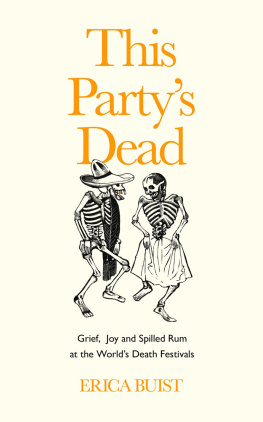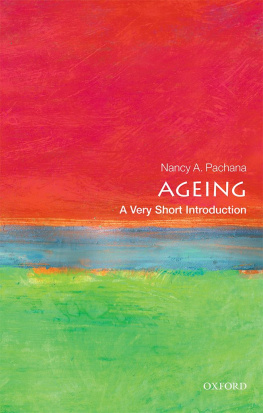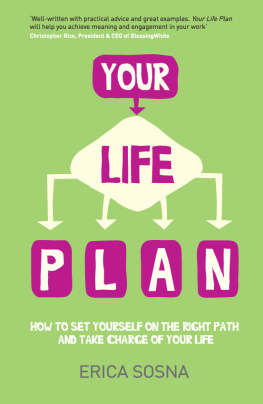Dynamism and the Ageing of a Japanese New Religion
To Toki and Anna
Also available from Bloomsbury
Mountain Mandalas, Allan G. Grapard
The Origin of Modern Shinto in Japan, Yijiang Zhong
Shinto, Nature and Ideology in Contemporary Japan, Aike P. Rots
Dynamism and the Ageing of a Japanese New Religion
Transformations and the Founder
Erica Baffelli and Ian Reader
Contents
This project could not have been completed without the encouragement and support of many colleagues, friends and family.
The idea of this book was initially discussed during the annual joint workshop on Religion in Contemporary Japan organized between the University of Manchester and Tbingen University, Germany. We would like to thank our colleagues Klaus Antoni, Monika Schrimpf, Birgit Staemmler and David Weiss for their feedback and for inviting us to share our preliminary thoughts with their students at Tbingen. We would also like to express our gratitude to colleagues who helped us complete this work by sharing research materials and publications, replying to our questions, joining us during fieldwork visits and inviting us to present our project at their institutions: Ian Astley, Alexandre Benod, John Breen, Andrea Castiglioni, Lucia Dolce, Benjamin Dorman, Chiara Ghidini, Horie Norichika, Paulina Kolata, Benedetta Lomi, Nishimura Akira and Tatsuma Padoan. Thanks are also due to various officials and members in Agonsh for patiently answering our questions during fieldwork and via email.
Our most recent fieldwork in Japan in 201718 was supported by a grant from the Great Britain Sasakawa Foundation, while previous visits where supported by grants from Japan Foundation, Japan Foundation Endowment Committee and the Japan Society for the Promotion of Science.
Many thanks also to Lalle Pursglove and Lucy Carroll at Bloomsbury for their help and support in producing this volume, and to the four anonymous reviewers who enthusiastically supported our book proposal and provided insightful comments on it.
We are also grateful to John Shultz and Ritsuko Tatsumi for their hospitality in Japan, to Jonathan Bunt for spiritual assistance in helping us unwind after work sessions and to Tokis Kitchen for feeding us delicious sushi.
Finally, we would like to thank our family members, Dorothy, Rosie, Phil, Toki and Anna, for their support and for diplomatically appearing to listen to our discussions.
All Japanese names are in standard Japanese order of family name first, followed by given name.
Long vowels are indicated by macrons (, ) except for words and names commonly used in English (e.g. Kyoto, Tokyo, Shinto).
When talking about religious institutions in Japan associated with its two main religious traditions, Shinto and Buddhism, we follow standard conventions and refer to Shinto institutions as shrines and Buddhist ones as temples.
Death of a founder and themes of this book
On 29 August 2016, Kiriyama Seiy, the founder of the Japanese religious movement Agonsh, died. Although Kiriyamas movement originated in 1954, it became widely known in Japan in the 1980s because of its use of media technologies and its dramatic public rituals that attracted huge crowds. These, along with Kiriyamas easily accessible sermons that offered hope of dealing with misfortunes and of confronting the worlds problems, his charismatic personality and his seeming ability to tap into the popular mood of the times, gave Agonsh an aura of dynamism and excitement that attracted new followers. It created a sense of optimism about the mission of world salvation that Kiriyama proclaimed a mission of spreading a revitalized Buddhism from Japan to the world at large.
Three decades later things seemed rather different. In the years before his death Kiriyama appeared to be frail when he performed Agonsh rituals, and had to be helped to participate in them. The movement appeared to be ageing along with its founder, with a membership that looked older and seemed to have lost the momentum of earlier years. Kiriyamas death, at the age of 95, presented the movement he founded and was so central to with a significant challenge. It also marked a major rite of passage for Agonsh one that is commonly faced by religious movements after the demise of inspirational founders and as they struggle to face the future without the living presence of the person whose charismatic leadership has been such a factor in recruiting followers. As will be seen later, how Agonsh dealt with this immediate challenge, by memorializing his spirit and enshrining him alongside the historical Buddha as its main object of worship, followed a pattern of founder veneration found in many Japanese religious movements.
This book is not, however, specifically an examination of Agonsh and of Kiriyama Seiy, so much as it is one that uses Agonsh as a case study to discuss a number of issues pertinent to movements in their early stages of development. In particular it focuses on the construction and trajectories of religious movements and their founders in the period from their founding and the dynamism and excitement that can accompany such early phases, to the ways in which they handle the ageing and loss of their founders. In such contexts, too, it looks at the role and nature of charisma as a driving force in the construction of new movements, at how movements deal with ), but of Japanese religious movements and of the trajectories of new movements more generally.
By tracing the development of a new movement in the context of how changes in the status of its leader affect the ways in which the movement operates and positions itself, we identify and examine a number of themes. These include the roles and nature of religious founders, and the ways in which they are viewed and portrayed in the movements they establish and lead, the ways in which the ageing process even within the first generation of leadership and membership may be reflected in changes in orientation in terms of teaching and practice, and how charismatic leadership may be modified and recalibrated to adjust to the loss of a founder. As we examine these themes we will note, for example, how a founder may initially be portrayed in his or her movement as a teacher with new spiritual insights who points to inalienable and ancient truths and offers a new way, with new modes of presentation, teachings, rituals and practices, of dealing with problems and issues in the modern world. Yet as the movement s/he founds develops and grows, the teacher who is initially seen as a role model for followers may be increasingly elevated to higher spiritual levels and acclaimed as a deity or a Buddha and an object of reverence. In this process, the founder/leader becomes elevated beyond the realms of ordinary people and followers, while the movement s/he founded becomes centred increasingly on founder veneration. Agonshs treatment of Kiriyama, especially in the immediate period after his death, provides a good example of this process in action and is one that has resonances across the religious spectrum.
Charismatic leadership alone is not a guarantor of success, of course. While a leaders charisma and personality play significant roles in drawing people to a movement, these are not enough for the success or even survival of religious groups. As one of us has discussed elsewhere (Baffelli 2016), Agonsh and others (e.g. Kfuku no Kagaku, another Japanese movement that emerged in the 1980s and that will also be mentioned in this book) became popular not just because of their leader, but also because of a combination of the leaders image, the ways that they packaged their messages, their uses of media and the ways in which they managed to incorporate and manifest issues that were prevalent in the era in which they developed. How religious movements are constructed, in other words, and how they are presented to followers (existing and potential) are crucial to how they manage to attain and retain support.













